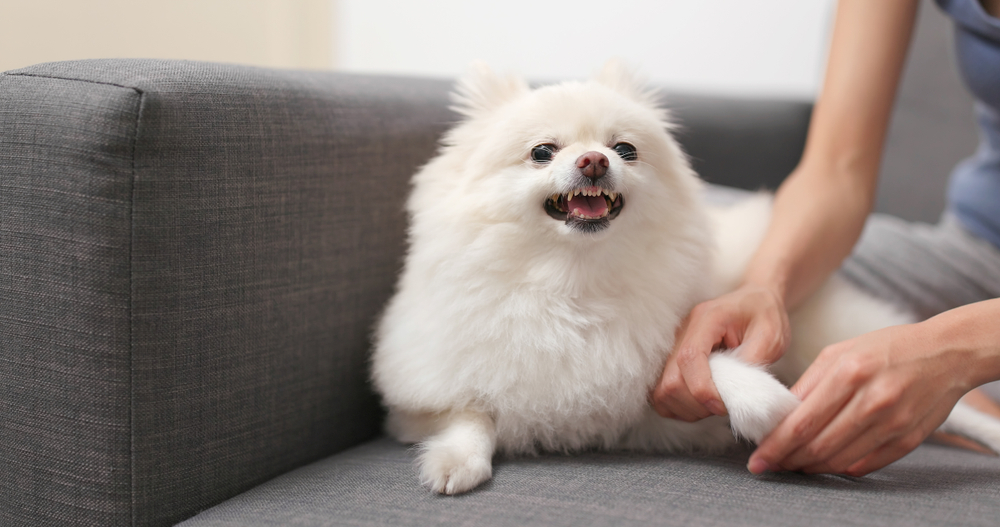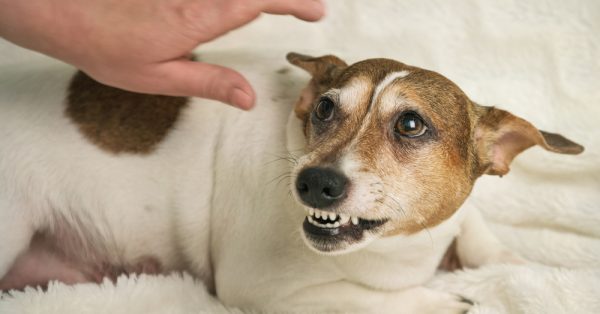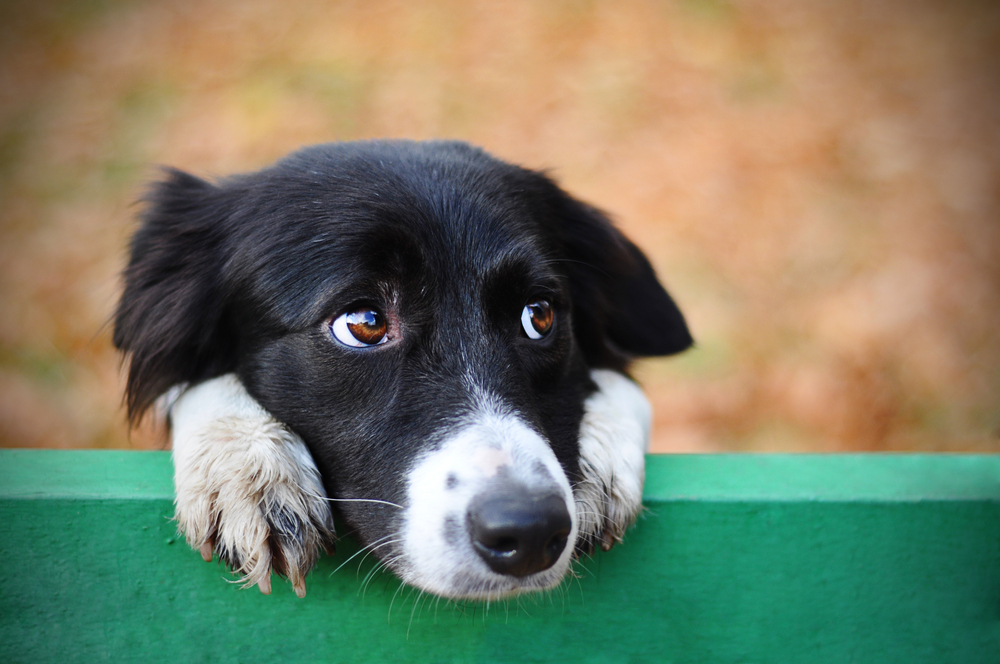Click to Skip Ahead
Dogs can’t speak, but they still have ways to communicate with us through body language and vocalizations. One way that dogs can communicate is through growling. Dogs typically have more than one type of growl, from a playful growl to a more aggressive warning. Recognizing the cause of a growl helps you know how to react and the steps you need to take to help your canine companion.
Typically, you need context to be able to determine that cause, and below we look at the most likely causes of your dog growling when you pet them. We also consider what steps you can take to help your dog feel more comfortable and prevent them from escalating their behavior.
The 8 Reasons Your Dog Growls When You Pet Him
If your dog is growling at you when you pet them, you need to think about context. Are they chewing a treat you’ve given them, or maybe guarding something they’ve taken from the kitchen without permission? Is it possible they’re in pain or feeling unwell? Here we look at possible causes of this behavior.
1. Feeling Threatened
A serious, low growl, is usually given as a warning and is most commonly heard when your dog feels threatened in some way. A new person or another dog in the house could be the cause of the growling and the fact that you’re approaching and petting your dog may not be the actual cause.
Your dog might be resource guarding if they have a chew, some food, a favorite toy, or something they’ve stolen from around the house. Or, your petting might have encouraged another pet in the house to approach, and this has caused your dog to feel threatened.
2. Fear
Fear is a similar response to feeling threatened. If your dog has experienced abuse in the past, he might be expecting that petting to turn into physical abuse, even if you weren’t the perpetrator of earlier abusive behavior.

3. Playing
The play growl is typically quite different from the warning growl and it can be accompanied by yapping as well as a playful posture. A typical play position is bowed forward with the front legs on the ground and the rear raised in the air.
Your dog wants you to initiate some form of play, so if there’s a toy to hand, grab it and play for a few minutes.
4. Frustrated
Frustration most commonly occurs when your dog is not getting what it wants. If you’ve refused to let your dog have something and are petting it in the hope of making him feel better, the growl could be an indication of frustration.
Frustrated growls are usually situational, but they can lead to nipping or accidental biting, so you need to work out what your dog is frustrated about and either remedy the situation or move away.

5. Pleasure
A growl isn’t necessarily a sign of aggression, frustration, or even play. Some dogs vocalize differently from other dogs, and this can include a growling-type sound as a sign of pleasure. Think of it as being similar to the sound of a cat purring.
If you have a new dog, and it responds differently to other dogs you’ve owned, it can be disconcerting to hear a pleasure growl, and you should ensure that that really is what you’re hearing.
6. Aggression
Dogs can growl aggressively to communicate that they want space or to end a situation. If you are doing something that is irritating your dog, or your dog is feeling vulnerable, this is most likely to cause an aggressive growl.
Hopefully, it is a warning growl, and if you believe your dog is growling aggressively, you should move away and give your dog space. Seek professional behavioral help as soon as possible to address the root of the behavior.

7. Pain
Dogs don’t have a lot of ways to express pain. They might cry or howl if the pain is intense or sudden, but it is also possible that a dog will growl to show pain. This is especially possible if your petting is close to or in an area where the pain is coming from.
You might not be precisely touching the spot that is causing pain but if you’re getting close to it, your dog might be letting you know that it doesn’t want you to pet any further.
8. Surprise
If your dog was asleep and you woke it up to pet it, he might be growling because you surprised him. Some dogs naturally react this way when they are woken up or startled and you should try and give some kind of warning before you approach them. This can be especially likely in dogs with difficult backgrounds.
For example, if your pup previously lived on the streets, this kind of reaction is perfectly natural and would have acted as a means of protection.

What to Do If Your Dog Growls
In most cases, if your dog growls while you are petting them it is a sign they are unhappy or scared about something. Although many of us don’t want our dogs to growl, if we inhibit or punish the communication they may escalate to another behavior like biting.
It is essential to try and figure out what is making your dog uncomfortable or fearful. If we listen to our canine companions we can help them to feel comfortable and not feel the need to growl in the future. Below are some of the steps to take to help your dog.
1. Identify the Cause
Consider your dog’s position, what it was doing before you started petting, and whether it shows any other signs of pain, discomfort, or anxiety. This will help you determine the most likely cause of the growling and it will help determine your best course of action to prevent further growling.
2. Stay Calm
A strong reaction is unlikely to be the best course of action. Don’t shout at your dog, and certainly don’t hit them or slap them. If your dog’s growling is aggressive or is borne from fear or anxiety, your harsh reaction will likely only make it worse.
Take a step back, consider the situation, and use the opportunity to determine the most likely cause of the behavior.

3. Eliminate the Cause
If you determine the cause and you can remove the stressor from your dog’s life, do so. For example, if the growling is being caused by a person or animal approaching from behind you, have them take a step back. If your dog is guarding certain objects, stop them having access to them for the time being.
If it is caused by pain or illness, you will need to seek veterinary advice to diagnose and treat the issue.
4. Redirection
Redirection is a great tool for dog owners. If your dog is feeling anxious or afraid, you can redirect this with a toy or some other activity that your dog enjoys. Grab the leash and go for a walk. Grab a tennis ball and head out into the garden. This will take your dog’s mind off the problem and it will help build a bond between the two of you.
5. Get Help
If your dog needs medical help, because they are ill or in pain, speak to a vet. If your dog is showing signs of fear, anxiety or aggression, speak to a behaviorist as soon as possible. Professionals can help you remedy the problem through a behavioral modification program which uses positive reinforcement techniques. They can work with you to get the results you want and ensure your dog becomes a happy and well-adjusted member of the family.

Conclusion
Dogs growl for many reasons. They growl when playing, as well as when they are being aggressive. Some dogs even growl to show pleasure, and if you’ve never had a dog that does this it can be difficult to recognize.
Having a dog growl at you can be a tense and upsetting experience, but you must react in the right way. This means, getting yourself out of harm’s way, if necessary, before taking the time to consider what happened and what might have caused the growling in the first place.
Once you’ve done that, you will be able to figure out the next best move, whether that be contacting a vet, distracting your dog from the problem, or getting used to having a dog that growls when it is enjoying the attention.
Featured Image Credit: Bonsales, Shutterstock














